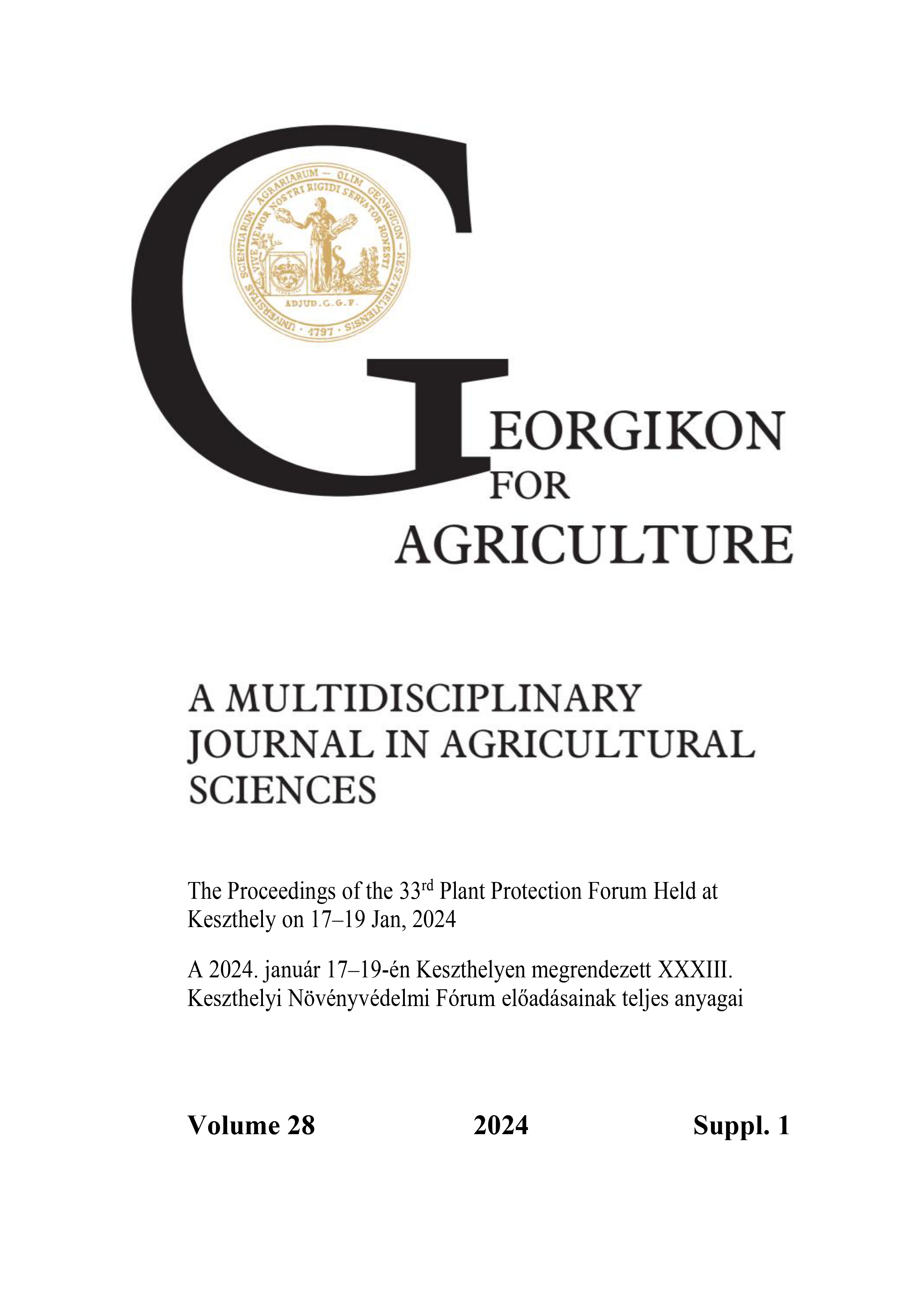Investigation of Viromes of Solanaceous Weeds
Keywords:
Virus diagnostics, Solanaceae, endemic plants, invasive weeds, cucumber mosaic virus, broad bean wilt virus, PCR, RT-PCR, HTS, virus reservoirAbstract
Within the scope of our research study, we delve into a comprehensive investigation of virome of solanaceous weeds at the edge of crop fields and natural habitats. For this pilot study leaves of symptomatic Datura stramonium and Solanum nigrum were collected at two different locations near Keszthely in 2022. High-throughput sequencing (HTS) of small RNAs and RNAs were conducted and the sequenced reads were analysed using bioinformatic methods. Out of the identified viruses we confirmed the presence of the cucumber mosaic virus (CMV), encompassing RNA1, RNA2, and RNA3 components, as well as broad bean wilt virus 1 (BBWV1) RNA2 using RT-PCR. HTS resulted infection with several other viruses which presence are currently under validation. This pilot study contributes to our understanding of the viral diversity within Solanaceae plants, shedding light on the role of these plants as virus reservoirs. The implications of these findings may help to develop strategies for virus management of both endemic and invasive plant populations.
References
Duffus, J. E. 1971. Role of weeds in the incidence of virus diseases. Annual Review of Phytopathology. 9 (1) 319–340. https://doi.org/10.1146/annurev.py.09.090171.001535
Gebhardt, C. 2016. The historical role of species from the Solanaceae plant family in genetic research. Theoretical and Applied Genetics. 129 (12) 2281-2294. https://doi.org/10.1007/s00122-016-2804-1
Hančinský, R., Mihálik, D., Mrkvová, M., Candresse, T. and Glasa, M. 2020. Plant viruses infecting Solanaceae family members in the cultivated and wild environments: A Review. Plants. 9 (5) 667. https://doi.org/10.3390/plants9050667
Olmstead, R.G., Bohs, L., Migid, H. A., Santiago-Valentin, E., Garcia, V. F. and Collier, S.M. 2008. A molecular phylogeny of the Solanaceae. Taxon. 57 (4) 1159–1181. https://doi.org/10.1002/tax.574010
Takács A., Horváth J. és Kazinczi G. 2006. Burgonya ökoszisztémában előforduló Solanum nigrum és Datura stramonium vírusrezervoár szerepének vizsgálata, XVI Növényvéd. Fórum, Keszthely 103.
Takács, A. P., Kazinczi, G., Horváth, J. and Pribék, D. 2001. New host-virus relations between different Solanum species and viruses. Meded. Rijksuniv. Gent Fak Landbouwkd Toegep Biol. Wet. 66 (2a) 183–186.
Wren, J. D., Roossinck, M. J., Nelson, R. S., Scheets, K., Palmer, M. W. and Melcher, U. 2006. Plant Virus Biodiversity and Ecology. PLOS Biology. 4 (3) 80. https://doi.org/10.1371/journal.pbio.0040080
Downloads
Published
Issue
Section
License
Copyright (c) 2024 Burim Ismajli, Pásztor György, Takács András, Várallyay Éva

This work is licensed under a Creative Commons Attribution-NonCommercial-NoDerivatives 4.0 International License.
Cikkre a Creative Commons 4.0 standard licenc alábbi típusa vonatkozik: CC-BY-NC-ND-4.0. Ennek értelmében a mű szabadon másolható, terjeszthető, bemutatható és előadható, azonban nem használható fel kereskedelmi célokra (NC), továbbá nem módosítható és nem készíthető belőle átdolgozás, származékos mű (ND). A licenc alapján a szerző vagy a jogosult által meghatározott módon fel kell tüntetni a szerző nevét és a szerzői mű címét (BY).




